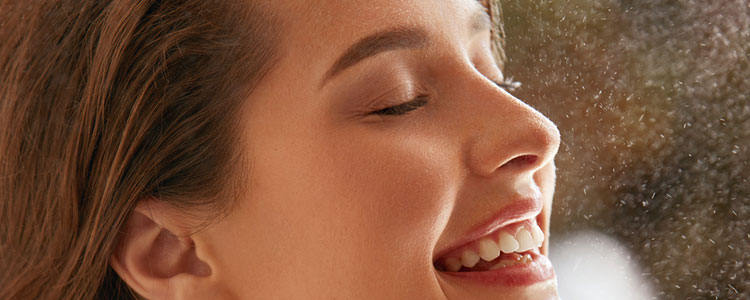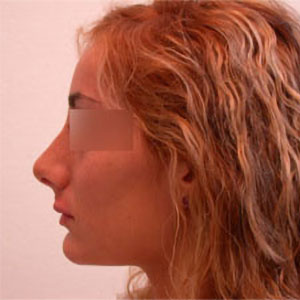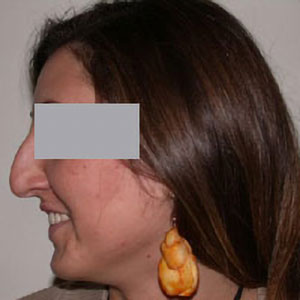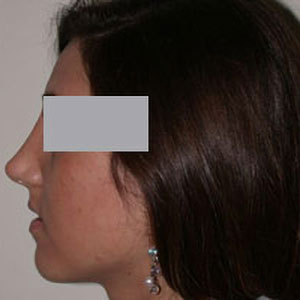Rhinoplasty

The nose, being at the center of our face, is crucial for our appearance. A nose that you do not like may distress your image and most important your self-esteem.
Rhinoplasty is a procedure to reshape the nose, where imperfections are very difficult to hide, if this is a major concern. Surgery can create a look giving you relief and confidence.
Noses that are very angled or unaligned or may have a deviated septum and prevent you from having free breathing. In this case, the intervention restores the functionality bringing the septum in the correct position and allowing you to breathe normally.




Rhinoplasty
Rhinoplasty can make numerous changes to the nose: removing pumps, appearance to length, shape, and narrow nostrils and refine the entire bone structure.
Viewing your image on the computer, you will overview various possible solutions and choose the best intervention to be executed.
Knowing that the operational techniques are now very advanced and being in the hands of an experienced surgeon and precision, the result is almost guaranteed.
Rhinoplasty can be practiced at the end of adolescence when the nose has fully completed its development.
It should be noted that:
- In planning the intervention it is considered that if the nose has suffered from trauma, problems may arise during the remodeling stage or you may experience difficulty breathing after the procedure.
- Skin with large pores and rich in fat may make it more difficult to train a bit thin, instead very thin skin emphasizes more the contours of bone structure and cartilage.
- Small irregularities can be formed during the healing process with the re-shaping of bone and cartilage. They can be corrected in a second trial with a small retouching surgery under local anesthesia.
Anesthesia and recovery
Most rhinoplasty surgeries are done under general anesthesia with the recovery period in a clinic. The intervention takes on average 1 to 2 hours. Pre-surgery analyses will be made by the anaesthesiologist made in the clinic before the intervention. It is a 1-day procedure in the hospital.
Small corrections may be performed safely under local anesthesia at the doctors office of your plastic surgeon.
Precautions
To minimize the risks and complications follow closely all instructions given by your surgeon both before and after the procedure.
Communicate if you’ve ever suffered from allergies or other chronic diseases. If you bruise easily or if you bleed excessively in the case of small wounds, there may require some analysis to exclude difficulties of your blood to clot.
Patients are asked to avoid taking aspirin-type painkillers a week or two before the surgery because these drugs lengthen the time of blood clotting and excessive bleeding. It is also recommended to avoid all alcohol and sleeping pills because it interferes with the healing process.
During the pre-surgery, your breathing, nose, and nasal mucous membranes will be controlled. Who has a sensitive mucous should apply creams for treating type bepanten solution or oil drops for two or three weeks before. Chronic infections of the nose or the ears and mouth must be diagnosed and treated in time
Intervention process
During the anesthesia, there are small incisions made inside the nose (another approach, instead of external incisions around the columella). The skin and mucous membranes are loosened structuring the bone cartilage and now the reshaping of the nose is remodeled using a specific instrument where you can remove a bump, wear thin or shorten the nose or reshape the tip.
In case of the nose is wrongly positioned you must first change the incorrect position of the bone structure and cartilage and then place it in the correct position.
Once the desired shape is obtained the mucous membrane is set back, anchoring them with absorbable stitches. The nostrils are supported by tubes or soft cotton swabs to prevent immediate post-surgery bleeding and they will be removed about 24 hours after the intervention. Finally, the skin on the nose is reshaped with the help of thin strips of plaster and with external plaster to stabilize the new shape of the nose.
What happens after surgery?
Typically, post-surgery pain is light. On the other hand, there is common swelling and bruising especially on the cheeks and lower eyelids. These problems disappear by themselves within a few days.
Internal stitches are reabsorbed on their own. The internal tubes are removed from the nasal canals after about 24 hours.
External support should be extended for at least 2 weeks, or until the bone-cartilage structure has not entirely stabilized.
Consider this situation when you plan your surgery.
Possible complications
Rhinoplasty performed in accordance with the best techniques does not entail great risks. Serious complications such as infections, injuries of the tearing canal, embolism, or thrombosis, are actually extremely rare.
For several weeks the skin of the nose and sometimes of the cheeks may remain less sensitive. Important corrections in the nasal septum can cause a movement in the nasal mucous membrane, and in the worst cases, this can lead to damage to the cartilage. These complications are rare but fixable in most cases.
More often there are changes in the shape due to an irregular healing of the bone cartilage. If it does not disappear alone within a few weeks you may need a little extra intervention.
Precautions after surgery
Avoid sports activities during the 3-4 weeks following the intervention because the cartilage-bone structure is not yet stable enough.
Normally you will feel reach your top shape within 1 week. If swelling persists it may need a slight lymphatic drainage.
After the intervention is better to sleep for a while with your head raised. A cream or a healing oil can help to regenerate the mucous membranes faster.
